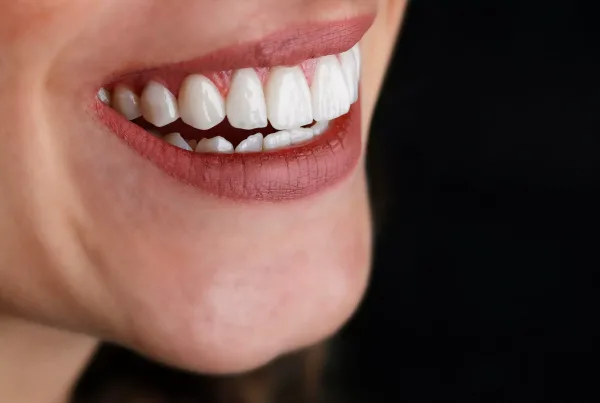A perfect smile looks beautiful on the outside and helps you gain healthy teeth and high self-confidence. A smile plays a vital role in making a first impression, so paying attention to dental health and aesthetic appearance enhances our quality of life. The things to do for a perfect smile range from daily dental care to healthy eating habits. Additionally, dental services’ aesthetic and corrective solutions will enhance your smile.
1.Prioritize Your Dental Health
Prioritizing your dental health is essential for a healthy smile and overall health. You can protect your teeth and improve your health in the long term by taking simple steps in daily life. Essential steps to prioritize your dental health include:
-
-
- Use of Dental Floss: You can use dental floss to clean food residues and plaque between your teeth. Using dental floss helps prevent gum diseases.
-
- Regular Brushing: You can brush your teeth twice daily, preferably in the morning and evening, for about two minutes each time. This reduces plaque buildup on your teeth and prevents the risk of cavities.
-
Choosing the Right Oral Care Products: Using appropriate products to maintain your dental health is essential. You can consider your dentist’s recommendations when choosing oral care products such as toothbrushes and dental floss.
- Use of Dental Floss: You can use dental floss to clean food residues and plaque between your teeth. Using dental floss helps prevent gum diseases.
-
Adopting regular dental care habits by prioritizing your dental health lays the foundation for a healthy and beautiful smile.
-
- Review Your Eating Habits
Reviewing your eating habits is critical for a healthy smile and overall body health. Consuming the right foods ensures the strength of your teeth and prevents gum diseases.
Increase Calcium and Vitamin D Intake
Calcium and vitamin D strengthen tooth enamel and support dental health. You can consume calcium-rich foods like dairy products like milk, cheese, and yogurt. Additionally, you can increase your vitamin D intake by benefiting from sunlight or using vitamin D supplements.
Consume Raw Vegetables and Fruits
Raw vegetables and fruits such as apples, carrots, and celery naturally clean your teeth, increase saliva production, and fight acid and bacteria.
Avoid Acidic and Sugary Foods
Foods containing sugar and acid can weaken tooth enamel and cause cavities. You can limit sugary snacks and acidic beverages and rinse your mouth with water after meals to neutralize acids.
3. Protect Your Teeth with Regular Oral Care
Regular oral care and a healthy diet are the keys to maintaining dental health for a perfect smile. Essential steps to establish routine oral care include:
-
-
- Antioxidants and Gum Health: Consuming foods rich in antioxidants maintains your gum health and prevents gum inflammation. Green leafy vegetables, fruits, and various herbs are rich in antioxidants.
- Nighttime Plaque Protection: Wearing a plaque guard recommended by your dentist protects your teeth from grinding or bruxism.
- Importance of Water Consumption: Drinking water cleans food residues and bacteria in your mouth, increases saliva production and protects teeth. Drinking water protects tooth enamel by replacing acidic beverages.
-
-
Regular oral care and healthy eating habits positively affect not only your dental health but also your overall health.
4. Support Your Dental Health with Aesthetic Dental Services
Aesthetic dental services allow you to achieve a perfect smile and improve the appearance of your teeth with various options.
Orthodontic Treatments
Orthodontic treatments are dental procedures that ensure proper teeth alignment and correction of jaw structure. These treatments are applied to improve teeth’ aesthetic appearance and chewing functions.
Traditional Metal Wire Treatment
Traditional wire treatment performed using metal brackets and wires is an effective method for aligning teeth. The duration and effectiveness of the treatment may vary depending on the condition.
Transparent Trays (Invisalign)
Orthodontic treatments with transparent trays like Invisalign offer an aesthetic alternative. These trays correct minor irregularities and are a less noticeable treatment option.
Post-Treatment Retainer Use
Using a retainer after treatment is essential for maintaining the results achieved. Retainers stabilize your teeth in their new positions and help achieve long-term results.
Teeth Whitening Procedures
Teeth whitening procedures are aesthetic dental services used to regain the natural whiteness of teeth or achieve a whiter appearance.
Professional Teeth Whitening Processes
Professional teeth whitening procedures in your dentist’s office provide solid and effective results. Your dentist evaluates the condition of your teeth and determines the most suitable whitening method for you.
At-Home Teeth Whitening Kits
At-home teeth whitening kits recommended by your dentist are available. These kits generally contain whitening gels placed in a special tray and used for a certain period.
Effects of Whitening Agents
Teeth whitening procedures use whitening agents such as hydrogen peroxide or carbamide peroxide. These substances penetrate the tooth enamel to remove stains and discoloration.
Dental Veneers and Aesthetic Fillings
Dental veneers and aesthetic fillings are dental services used to improve the appearance of teeth and achieve an aesthetic smile. These procedures can correct teeth’ shape, size, color, and even position.
Porcelain Veneers (Veneers)
Porcelain veneers are thin, custom-shaped porcelain plates placed on the front surface of teeth. Veneers are used to improve teeth’ color, shape, and size and provide a natural appearance.
Composite Fillings
Composite fillings are used to fill cavities and correct tooth color. These fillings are specially colored to match the natural color of teeth and applied.
Advantages of Aesthetic Fillings
Aesthetic fillings can be used not only to improve the aesthetic appearance of teeth but also to correct cavities and dental irregularities. They provide a natural appearance to teeth while preserving dental functions.
Gum Correction and Smile Design
Gum correction and smile design are methods to achieve a beautiful smile in dental aesthetics. These procedures are performed to improve the appearance of gum tissue and provide a more balanced smile.
Gingivectomy and Gingivoplasty
Among the most common gum correction procedures are gingivectomy and gingivoplasty. Gingivectomy is used in cases where there is excess gum tissue and lowers the gum line. Gingivoplasty is used to correct the shape of the gums and provide a more aesthetic appearance.
Smile Design
Smile design considers not only gum correction procedures but also teeth’ shape, size, and color. This procedure improves the proportions between teeth, symmetry, and the smoothness of the gum line.
Laser Gum Correction
Laser gum correction, a less invasive option than traditional methods, removes excess gum tissue and corrects the gum line. Laser technology provides faster healing times and less discomfort.
Dental Implants and Bridges
Dental implants and bridges are restorative treatments that replace missing teeth and fill tooth gaps. These treatments help restore your smile and chewing ability by replacing missing teeth functionally and aesthetically.
Dental Implants
Dental implants are restorative dental treatments created by placing artificial roots similar to titanium screws to replace missing teeth. Implants are placed into the jawbone and fused over time, providing a stable foundation.
Dental implants are long-lasting and can last many years with proper care and regular dental check-ups.
Bridges
Dental bridges are restorative dental treatments used to replace one or more missing teeth. They fill the gap the missing tooth leaves by relying on the strong teeth around it.
Traditional bridges consist of artificial teeth made of porcelain or ceramic materials supported by healthy teeth.





